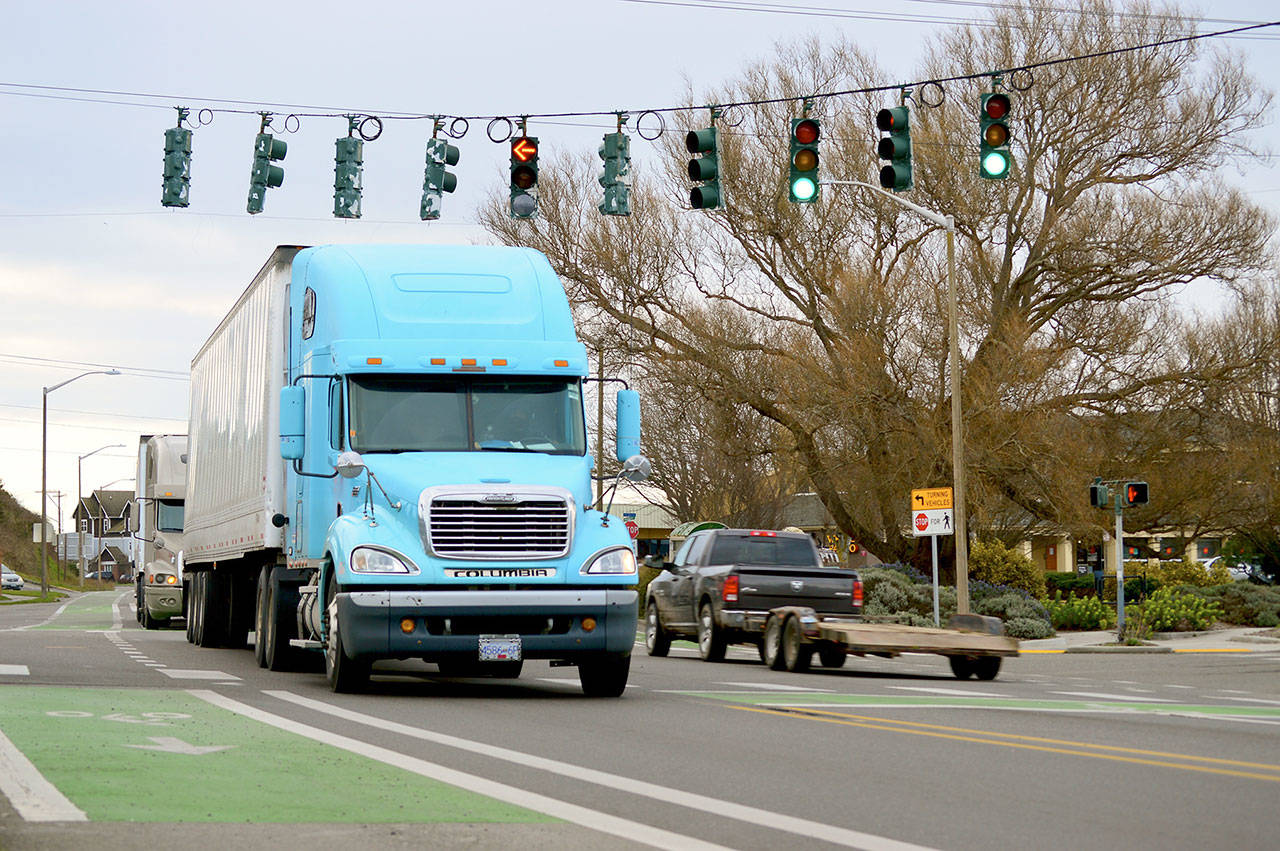PORT TOWNSEND — Thirty crashes, including three with bicyclists and two involving pedestrians: That’s the five-year total at two of the city’s busiest intersections.
In its Monday night meeting, the Port Townsend City Council explored how compact roundabouts — an evolved version of the traffic circle — could shrink both wreck numbers and wait times.
A panel of state Department of Transportation officials briefed the council on roundabouts for the Discovery Road-Mill Road-state Highway 20 and Kearney Street-Sims Way intersections.
The first one, near the Port Townsend entrance sign, sees more than 1,800 vehicles during rush hour. Another 1,300 come through the Kearney intersection at the busiest time of day, said multi-modal planning manager Dennis Engel.
He made a sweeping statement about the benefits of replacing stoplights with traffic circles.
“Serious injuries and fatalities don’t happen in roundabouts,” he said, “or they very rarely happen.”
Vehicle speeds are slower in a roundabout, Engel emphasized; that’s the traffic-calming function.
Council member Amy Howard, who described herself as an unabashed fan of roundabouts, said “a lot of education” is needed on how to “zipper in” to them.
State law requires motorists outside a roundabout to slow down and yield to those inside it; cars and trucks inside the circle have the right-of-way.
The WSDOT report noted too that compact roundabouts, which have a flat, curbless center island, are easier for trucks and emergency vehicles to navigate.
Fire engines and other large vehicles can drive across the center island, bypassing the cars.
Council members Pam Adams and Owen Rowe expressed concern about pedestrian safety amid the constant movement of trucks and cars through the roundabout.
“How can people safely cross when traffic is not stopping?” Rowe asked.
Unlike a conventional traffic signal, where pedestrians must traverse several lanes of traffic, compact roundabouts are configured so pedestrians cross only two lanes at a time, answered design engineer Scott Davis.
“You’re also looking at lower speeds,” he said, adding that signs and beacons can be installed.
Davis noted too that statistical data shows roundabouts reduce injury crashes by 76 percent; pedestrian-involved crashes by 30 to 40 percent and fatal crashes by 90 percent.
Charlie Cannon of Port Townsend was the lone participant in Monday’s public comment period. He wrote to the council that the Kearney-Sims roundabout, due to the Washington State Ferry traffic and the nearby Washington Street route to Uptown, will create backups, especially on busy summer days.
The design process is underway, however, for both new roundabouts.
Construction isn’t projected until spring 2023 — and “we’re looking for funding opportunities,” said city Public Works Director Steve King.
Mayor Michelle Sandoval finished the discussion by recalling what happened when Port Townsend’s first roundabout went in on upper Sims Way.
“It was one of those issues that was talked about in unfriendly terms for a long time before it was built,” she said, adding the council then received a flurry of apologies.
“ ‘We thought it was going to be hell,’ ” Sandoval said residents wrote, “And, ‘Gee whiz, I’m really sorry about that because they actually do move traffic.’ ”
________
Jefferson County senior reporter Diane Urbani de la Paz can be reached at 360-417-3509 or durbanidelapaz@peninsuladailynews.com.

